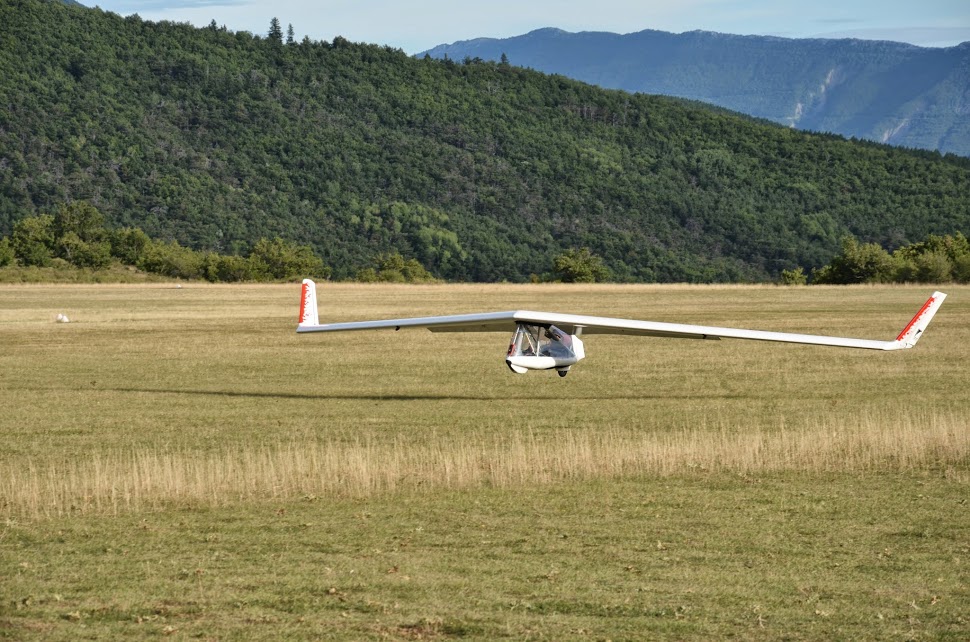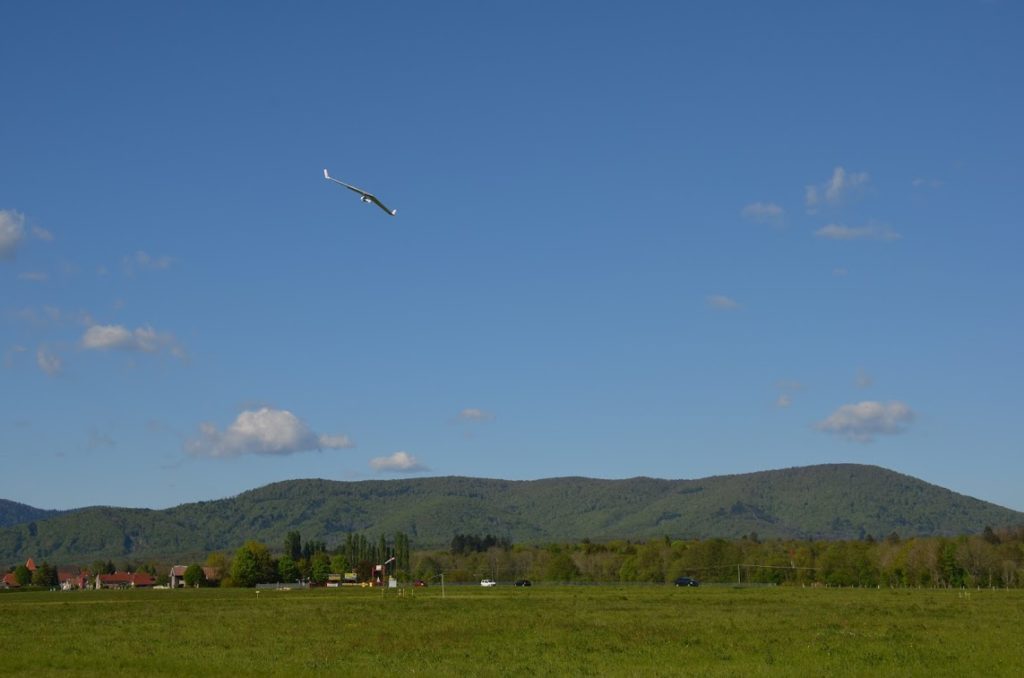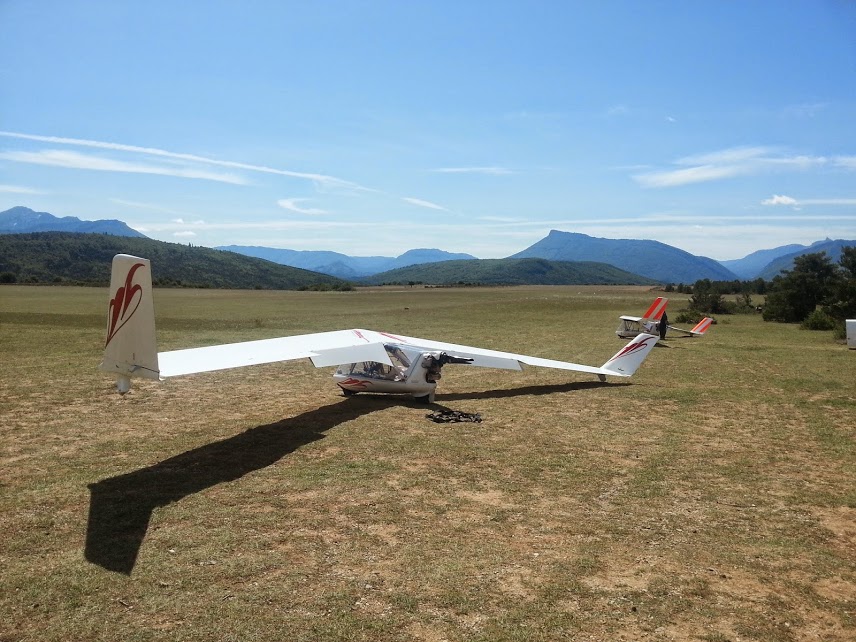Aeriane Swift Flying Wing
The Aériane Swift is a lightweight (48 kg) foot-launched tailless sailplane whose rigid wings have a span of 40 feet.
Although designed in California, Swift aircraft are now manufactured by Aériane, a European firm based in Gembloux, Belgium [2]. Aériane first manufactured the Swift under licence, but the firm is now the sole manufacturer. The original company sales video [3] show interesting early footage.
Design & development

The Swift (an acronym for ‘Swept Wing with Inboard Flap Trim’) was originally conceived as a rigid hang glider with sailplane-like performance. It was designed in a collaboration between Bright Star Gliders and Ilan Kroo, a professor at Stanford University, along with a group of Stanford graduate students. The Swift’s configuration as a foot-launched sailplane with rigid wings is shared by a very small number of gliders.
The swept wing has control surfaces along the entire trailing edge: flaps occupy the inner 42%, and elevons take up 58% of the outer span. The Swift has no vertical stabilizer and so faces the need for directional stability in yaw. This is addressed by winglets and the models with an enclosed cockpit also have conventional fuselage stabilising surfaces that contribute to yaw stability. The winglets on the 1990 prototype were fixed surfaces, so the pilot effected turns using the elevons.[4]

The original Swift is now out of production, having been replaced by a refined version called the Swift’Lite. This new model has winglets that, like those on the Rutan Long-EZ, are rudders when used singly, and air-brakes when used together.[5] In addition, compared to its predecessor, the Swift’Lite is claimed to be: 20% lighter, with lighter and more responsive controls, a lower stall speed, an improved glide ratio of 27:1, better pilot visibility and comfort, and simplified assembly procedure.[6]
Model range
A variety of different “fuselage pods” have been fitted beneath the wings to create a range of aircraft, as follows:
- the core product is the foot-launched glider (the Swift’Lite)
- a self-launching glider (the Swift-PAS) with 12 horsepower (8.9 kW) two-stroke engine, later with an 18 hp Bailey 175 four stroke engine
- a motor-glider (the P-Swift) with 25 horsepower (19 kW) 2-stroke engine
- an electric-powered variant (Swift-Light E) has 20 minutes of powered flight per charge. Power comes from an Eck-Geiger HPD-10, 10-kilowatt motor, controller and battery system, part of a setup designed and sold by Austrian hang-gliding champion Manfred Ruhmer.
- a two-seat glider used for training (the Tandem Swift)

The various fuselage frames are interchangeable and any can be added to the same basic wing. Swift gliders with engines have Arplast EcoProp folding propellers, which feather for soaring when then engine is turned off. Powered Swift gliders are not foot-launched, having instead two main wheels in tandem layout, and small wing-tip castors.
General characteristics
- Crew: 1
- Wingspan: 42 ft 0 in (12.80 m)
- Wing area: 136 sq ft (12.6 m2)
- Aspect ratio: 13:1
- Empty weight: 106 lb (48 kg)
Performance
- Rate of sink: 200 ft/min (1.0 m/s) in a 100 ft (30 m) radius turn
- Minimum sink rate: 118 ft/min (0.6 m/s)
- Lift-to-drag: 20:1 (maximum) 15:1 at 60 kn (111 km/h)
References
- “SWIFT” is also an acronym: (Swept Wing with Inboard Flap Trim)
- Aeriane website
- Original Swift promotional video
- Article 1991 – “Development of the SWIFT”. Archived from the original on 2011-09-05. Retrieved 2010-04-11.]9
- Bertrand, Noel; Rene Coulon; et al: World Directory of Leisure Aviation 2003-04, pages 41 and 52. Pagefast Ltd, Lancaster OK, 2003. ISSN 1368-485X
- A detailed report of the flying characteristics of the hybrid follow-up design to the original SWIFT.
Links
Posts by juliusdulux at https://www.ultralight-glider.com
